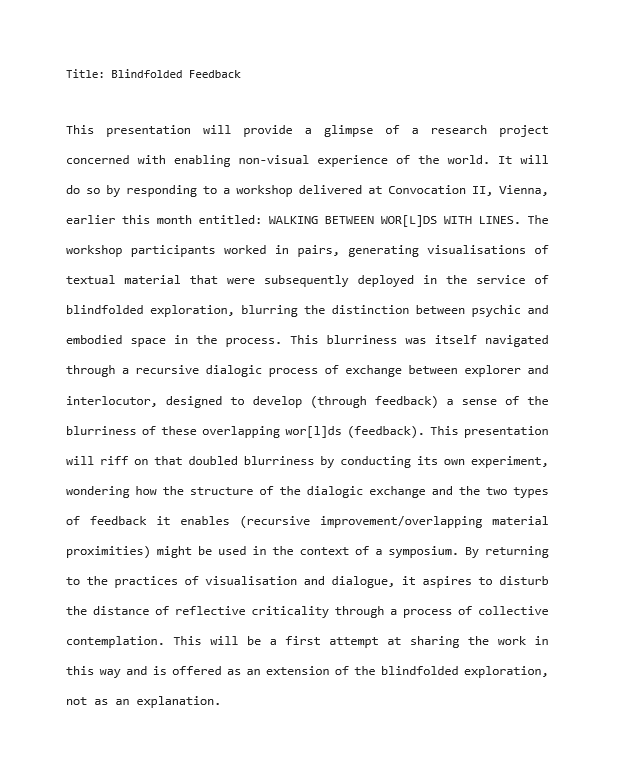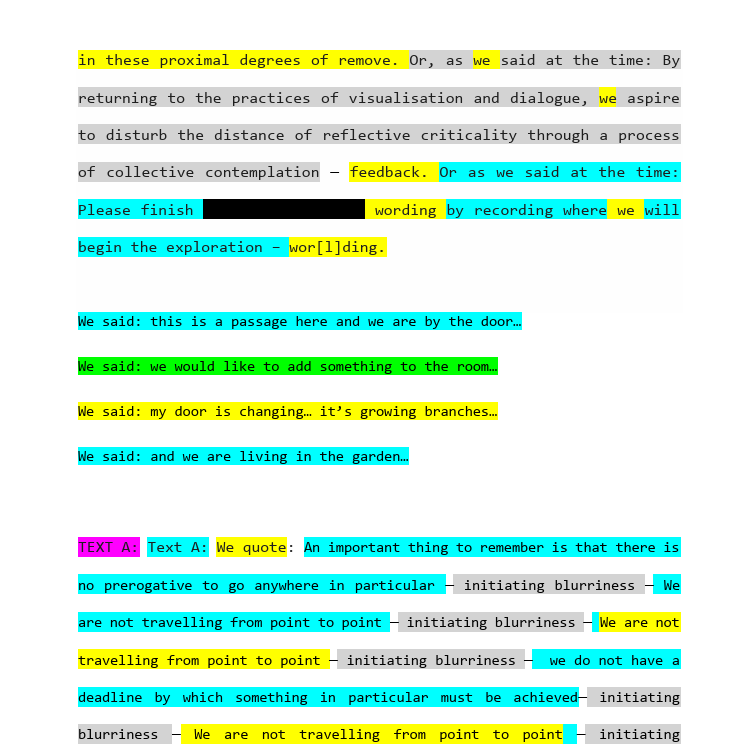
BLINDFOLDED FEEDBACK was created in response to the workshop WALKING BETWEEN WOR[L]DS WITH LINES (delivered at Convocation II, October 2023), and is intended as both documentation of that event and a work in its own right. The phrase ‘blindfolded feedback’ was generated in response to the call for ‘additional, unscheduled parallel sessions’ to the timetable during Convocation II. I proposed a feedback session that offered the chance for workshop participants to relay their experience of WALKING BETWEEN WOR[L]DS WITH LINES. However, in the event, no one could attend the allocated time for ‘blindfolded feedback’ due to the (many) other commitments already timetabled into the schedule of Convocation II. Rather than this being a problem, the difficulty of scheduling additional space and time in which the feedback could occur generated thoughts related to the workshop itself, and in particular, the imperative to re-attune to (and by default make space and time for), otherwise overlooked interpretations of the world. This in turn caused me to wonder how feedback is received when it falls outside of the allotted time ascribed to it (for I certainly received it), or the sensory modes attuned to it (for I definitely heard it), and how, by attending to feedback received as such, it might be utilised as material for reflective re-presentation: blindfolded feedback.
To explore these concerns I wrote an application to present at the University of Leeds’ Annual Practice-led PhD Symposium. That proposal can be accessed above.
For the symposium itself, I wrote a script for many voices designed to be performed through collective reading. The script is built around citations from the proposal and the workshop text for WALKING BETWEEN WOR[L]DS WITH LINES (available on the page of that name). By offering the text as a script to be performed by the room (a room whose normative attunement is that of a speaker visualising absence through a PowerPoint presentation), I (we) seek to re-attune to the room through the principles of (un)scheduled embodied, blindfolded feedback.
The script and an accompanying audio recording of the collective reading can be accessed below.
Benjamin Jenner: Script for the collective reading of BLINDFOLDED FEEDBACK.
In editing the audio recording of the collective reading, I have chosen to include the ‘voice’ of the speech to text translation service. This voice extends the interpretive imperative of the workshop WALKING BETWEEN WOR[L]DS WITH LINES by generating a new text, one whose ‘mistranslations’ will likely be utilised in future iterations of this work.
